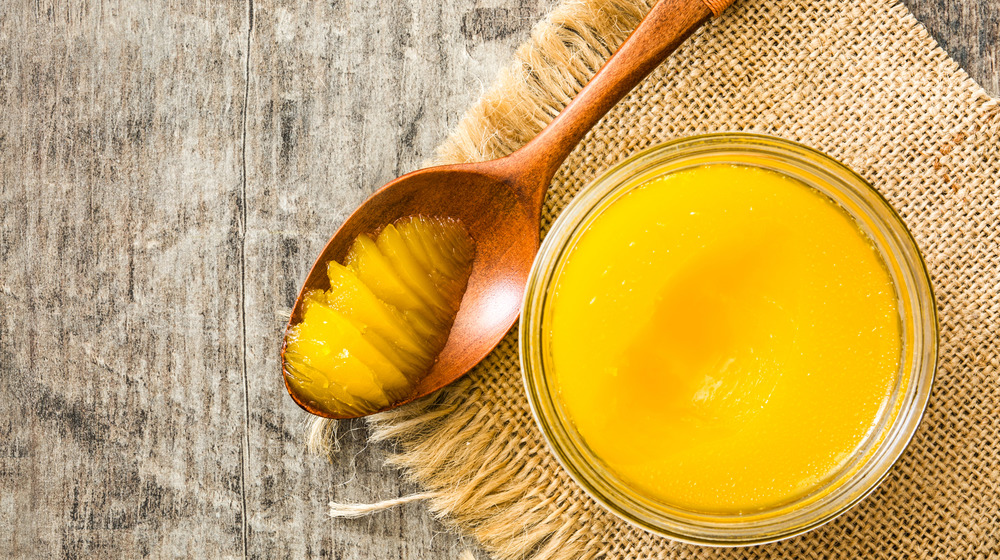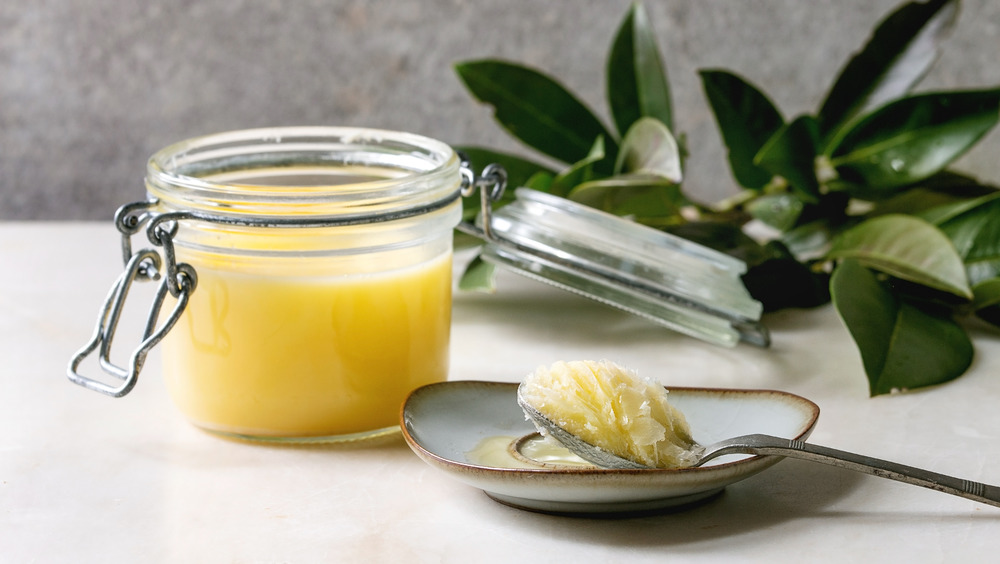Is Ghee Healthier Than Butter?
Although it has been around in Indian and Pakistani recipes for years, ghee has exploded in popularity recently. It commonly serves as a replacement for butter for those who are on a lactose-free diet.
But should you trade in your butter for ghee? Let's dive into the nutritional profiles of each to determine if ghee is healthier than butter.
Ghee is actually made by melting regular butter, separating it into liquid fats and milk solids. The milk solids are then removed, leaving the remaining lactose-free oil as ghee (via Medical News Today).
Butter and ghee have similar nutritional profiles, but ghee does have a slightly higher fat concentration, with 10 grams of saturated fat and 3.5 grams of monounsaturated fat in a one-tablespoon serving. Comparatively, butter has 7 grams of saturated fat and 3 grams of monounsaturated fat (via Healthline). There are also small caloric differences, with ghee having 120 calories and butter having 102 calories.
How ghee and butter differ
A big difference between ghee and butter is the cooking point. Ghee can be used at higher temperatures than butter, making it attractive to use when frying or sauteing. Butter is more likely to burn when used at high temperatures — its smoke point is 350 degrees, compared to ghee's 485-degree smoke point.
All in all, ghee and butter are very similar from a nutritional standpoint. Both can be consumed in moderation, with the recommended daily serving of butter being no more than six teaspoons. Without dairy, ghee may be easier to digest for those with lactose sensitivities.
The use of ghee can also be a personal decision. Ghee is also used in Ayurveda therapies, like massage and herbal ointments for burns and rashes.
Want to try out ghee instead of butter? Ghee has a nuttier flavor, so be prepared for a different aroma and taste than butter. You can use it the same way as butter, by either melting it or letting it harden to use as a spread.


